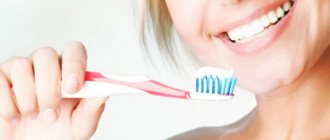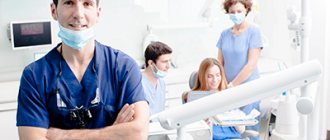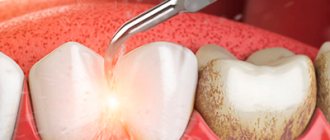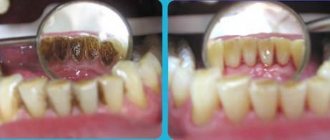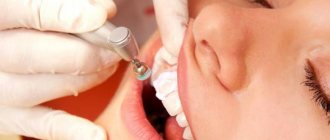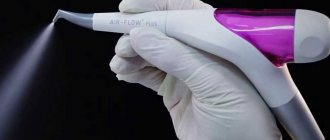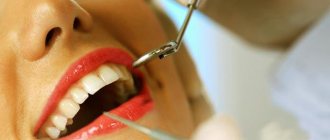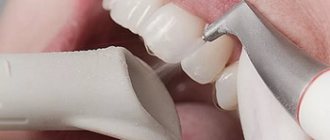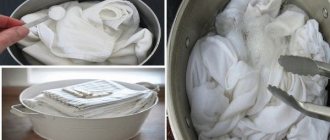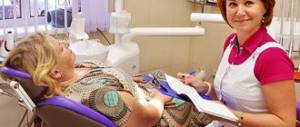According to sociological surveys, not all people have a correct understanding of some dental services. For this reason, we decided today to tell you about what professional teeth cleaning is and whether it is really necessary.
We will definitely talk about removing tartar, since it turns out that not everyone understands the feasibility of this procedure. We will tell you in what cases it is necessary to remove dental plaque and how ultrasonic teeth cleaning occurs. In general, this article promises to be not only interesting, but also very informative!
What you need to know about professional teeth cleaning
The importance of oral hygiene cannot be overestimated, because we all know that for teeth to be healthy, they need to be brushed twice a day, observing the technique and time of brushing. Many people who take proper care of their oral cavity are convinced that this is quite enough, but this is not entirely true.
Only strict adherence to the rules and times of brushing your teeth, as well as regular professional teeth cleaning can guarantee the longevity of a beautiful and healthy smile.
Before we talk directly about professional teeth cleaning in Krasnoyarsk, let’s once again highlight the basic, but so often violated, rules of dental and oral care.
Professional teeth cleaning, what is it?
According to statistics, every second inhabitant of the Earth remembers toothache as the most unpleasant sensation. Aching and exhausting in case of periodontal diseases and unbearably sharp in case of advanced caries, it faithfully directs patients to the dentist’s office. The only way to make your visits to a specialist more pleasant and rare is to carefully observe hygiene procedures. Only regular brushing allows you to get rid of plaque, which is an ideal habitat for pathogenic bacteria. Hard dental deposits and stones that form when plaque reacts with saliva can only be eliminated with the professional help of a dentist.
Let's start with the fact that professional teeth cleaning, despite the fact that many people confuse it with whitening, is used mainly for preventive purposes to improve the health of oral tissues and teeth; it is aimed at removing colored plaque and tartar. However, a pleasant “bonus” of this procedure is the attractive appearance of the teeth, which is acquired after it; they become one or two shades lighter. As a result of professionally carried out measures, tooth enamel becomes smooth - this helps to strengthen it and restores its natural whiteness. Carrying out professional hygiene procedures, which includes brushing your teeth, is recommended for everyone without exception. Clinical trials and medical practice have proven that the set of measures that this procedure implies does not damage or destroy tooth enamel and fillings. In other words, this procedure is safe, so it can be performed on both adults and children! It prevents the development of various diseases, eliminates bad breath, prevents bleeding gums, helps remove the colored film that forms on the teeth when smoking, as well as when drinking tea and coffee or products containing coloring enzymes.
Depending on individual characteristics (the intensity of tartar formation), it is recommended to undergo such a dental procedure at least once a year, the optimal option is once every six months.
Dental treatment may also be a reason to visit a periodontist. Pre-cleaning will allow the dentist to conduct a more thorough examination of your teeth and identify caries at the earliest possible stage. In addition, after brushing your teeth, you can more accurately select the color of the filling that matches the shade of your tooth.
The process of plaque and tartar formation
Soft dental plaque is a viscous structure consisting of food debris, saliva, bacterial cells and their metabolic products. It accumulates in places that are difficult to clean on your own or with a brush. These are fissures on the chewing surface, the cervical area of the teeth and the gingival groove.
Tooth enamel is covered with a structureless, quickly recovering shell, which is not noticeable when viewed with the naked eye. It helps protect it from damage during eating, provides enamel hydration and gives a specific shine.
When eating, the shell wears off and microorganisms begin to stick to the enamel. Of these, gram-positive rods, streptococci, and actinomycetes are attached in greater numbers. Food leftovers contribute to the active growth of microflora. After 14-16 days, the plaque hardens and turns into a dense plaque. The concentration of bacteria in plaque is 50% greater than in soft plaque. This formation is not washed off with saliva and is not eliminated after rinsing with water. After some time, the plaque becomes anaerobic, that is, infectious. The main methods of professional teeth cleaning to eliminate plaque and inflammatory reaction in the gum area:
The most common method of combating hard plaque today is ultrasound. Ultrasound is a universal method of cleaning teeth; it allows you to remove not only soft pigmented plaque, but also hard deposits on the teeth and even subgingival deposits, which other methods are not always “able to do.”
Modern ultrasound machines can be found in almost any dental clinic. They can be made in the form of a dental unit or a separate unit. Their main working element is an ultrasonic tip, which makes oscillatory movements and thereby creates vibration waves. To prevent heating of the dental tissue and the tip, the ultrasonic tip is washed with water. In the latest models of ultrasonic units, instead of water, an antiseptic liquid is supplied, which has an antimicrobial effect.
Advantages of the method:
- the most effective removal of even the most difficult deposits;
- this procedure has a therapeutic effect - it suppresses the activity of pathogenic bacteria;
- relieves gum inflammation by sanitizing periodontal pockets;
- the procedure is painless. In the case of very sensitive teeth, anesthesia is performed.
Ultrasonic teeth cleaning should not be performed on people with heart failure, diabetes and asthma, or people who have undergone organ transplantation.
“Air Flow” teeth cleaning (sandblasting).
This technique was developed by Swiss specialists and is based on brushing teeth with a mixture of fine powder, water and air. The cleaning composition is supplied under high pressure. The method is designed to remove soft plaque, coloring pigment and light deposits.
The powder particles hit the plaque at high speed, knocking it off the surface of the tooth, while the sprayed water washes away everything that has fallen off. This powder contains aromatic additives that give the oral cavity a special freshness. Thanks to the unique shape of the cleansing powder granules, this method eliminates damage to the enamel.
Advantages: high-quality cleaning, recommended for people who are afraid of dental procedures.
Contraindications: cannot be used for gum inflammation, as well as for people with bronchitis and bronchial asthma.
Laser teeth cleaning.
The action of a laser beam largely depends on the power and intensity of the impact, which is why it has become widely used in all areas of medicine. The principle of laser teeth cleaning is based on the use of long wavelengths - they have an anti-inflammatory and wound-healing effect and are detrimental to microflora. At the same time, the laser beam reacts sensitively to changes in density: plaque and tartar, which have lower values, evaporate, but there is no negative effect on the enamel. Moreover, the laser stimulates gum regeneration processes and increases the permeability of enamel to fluoride, calcium and other nutrients. It is this method of dental cleaning that is recommended for use for patients with increased tooth sensitivity, gingivitis and periodontal disease. After cleaning teeth with a laser, it is recommended to carry out procedures that help strengthen them, such as mineralization and fluoridation. The laser beam successfully copes not only with hard and soft deposits, but also eliminates pigmentation caused by smoking and ingesting coloring foods and drinks. Thanks to this, the visual effect of whitening is achieved.
After thorough cleaning and polishing of teeth, the effectiveness of such preventive measures as fluoridation increases. Teeth can be coated with professional fluoride varnish, fluoride gel or special fluoridating solutions. These drugs strengthen teeth weakened by plaque and protect against hypersensitivity. However, each of these products has its own characteristics (color, taste, consistency, etc.), which your personal dentist will tell you about.
Take care of yourself and remember prevention is easier than recovery!
Dentist-periodontist Patrikeeva S.V.
What does professional teeth cleaning include?
The first stage of professional cleaning is ultrasonic cleaning of teeth from hard plaque (tartar). At the second stage, soft dental plaque (tartar) is cleaned using special brushes and professional paste with active ingredients. And the last stage is the remineralization of dental tissues, achieved through the use of special gels and varnishes.
As you can see, professional teeth cleaning is a whole range of measures aimed at improving the health and strengthening of teeth. Only such oral hygiene, carried out regularly, will allow you to forget about toothache and other dental problems for many years.
Who needs professional teeth cleaning?
The procedure for cleaning plaque is necessary for all people who want to maintain the health of their teeth. It is also carried out in cases where there is tartar under the gum. Despite the high popularity of this manipulation, there is a category of people who absolutely need to brush their teeth:
- Patients who have dental implants installed. It is very important for such people to prevent stone formation in the abutment area. If a stone appears, there is a high risk of gum inflammation and bone atrophy, which leads to loss of implants.
- Patients who have artificial crowns, bridges, veneers or lumineers installed. They need to regularly clean the necks of their supporting teeth. Otherwise, gum inflammation or periodontitis may develop, which leads to loosening of the structures.
- Patients undergoing orthodontic treatment. If they do not have professional teeth cleaning done on time, there is a high risk of pulpitis or caries.
Cleaning plaque will help preserve expensive dental structures, as well as the health of the supporting teeth on which they are fixed. The procedure will also prevent the development of serious inflammatory diseases and minimize the risk of caries or tartar formation.
Stages of professional cleaning
Professional teeth cleaning includes several separate stages, which are carried out in strict sequence. The procedure looks like this:
- Soft plaque cleaning is carried out using ultrasonic technology. The dentist uses a small electric brush onto which a special paste is applied. After that, he treats all the teeth, cleaning them from surface contamination.
- Cleaning of hard deposits is most often carried out using the Air Flow method. With its help, it is possible to carefully clean the oral cavity from dental plaque.
- Strips - treatment of interdental crevices with a special metal tape, which allows you to clean plaque and remove tartar.
- Polishing – after professional cleaning, the surface of the teeth becomes rough. To get rid of this, the teeth are treated with a special roller, onto which the medicine is applied.
- Treatment with fluoridating varnish is the application of fluoridated enamel to the surface of the tooth, which prevents tooth decay and plaque formation in the future.
Air Flow technique
The Air Flow technique is based on the use of baking soda, which is used to treat the teeth using strong pressure of air and water. All these components contribute to the detachment of plaque from the enamel, after which the dirt is washed off and completely removed. In each case, the dentist determines the individual parameters of the sprayer. At the same time, it is important for him to consider:
- Sensitivity of teeth.
- Thickness of tooth enamel.
- The thickness of plaque and the size of the stone.
Among the absolute contraindications to this procedure are:
- Chronic diseases of the upper and lower respiratory tract.
- Increased abrasion of the enamel or it is too thin.
- Allergy or hypersensitivity to components.
- Gum diseases: periodontal disease, stomatitis, gingivitis.
- Increased sensitivity to mechanical influences on teeth.
Ultrasonic cleaning
Ultrasonic teeth cleaning is a procedure in which dental plaque is exposed to ultrasound. With its help it is possible to achieve the following results:
- Destroy plaque without damaging tooth enamel.
- Clean teeth from remaining plaque.
- Create a feeling of freshness and cleanliness in the oral cavity.
There are special flavored toothpastes for cleaning teeth. With their help, it is possible to create a pleasant feeling in the mouth. The most popular flavors are lemon, menthol and mint. Despite the high safety of this procedure, ultrasonic cleaning is not carried out in the following cases:
- Children under 14 years of age.
- With increased sensitivity of the enamel.
- For viral diseases such as HIV, hepatitis or tuberculosis.
- For chronic bronchitis or bronchial asthma.
- For cardiac arrhythmia.
- During an exacerbation of colds.
- Patients who have implants installed in their bodies.
Why and who needs tartar removal?
Ideally, tartar removal should be carried out once every six months. It is during this time period that it manages to form, but does not have time to provoke any pathological changes.
By the way, about the changes. Tartar deposits can not only negatively affect the aesthetic aspect of a smile, but also provoke the development of gingivitis (inflammation of the gums), caries (which is very common) and periodontal disease (severe damage to the periodontal tissue).
Please note that tartar removal can only be carried out by a dentist! Never try to get rid of dental plaque on your own using chemicals and other “folk remedies”: they can cause irreversible consequences for teeth and health in general!
Why do you need professional teeth cleaning?
Often, during the consultation during the first visit to the dentist after examining the oral cavity, the patient learns that before starting treatment he is recommended to undergo professional teeth cleaning. For many patients, the very fact of the existence of such a procedure is a discovery. As the doctor talks in more detail about what it is and why it is needed at all, some patients may be skeptical about this procedure, since it has never been done before, they still have teeth and they even brush them regularly, as taught - twice a day with delicious toothpaste with a newfangled toothbrush from advertising)) What else do you need?
This approach is normal. After all, since kindergarten, we have always been told that daily brushing of teeth is a mandatory ritual, and that if you do it, your teeth and gums will be healthy, and we have the impression that home brushing is sufficient and high-quality hygiene. But that's not true. As an adult, home hygiene is no longer enough, and today we will tell you why.
As research and practice show, most people brush their teeth only in the morning and only for a “whole” 30-40 seconds. Many people sometimes prefer to “forget” about evening cleansing due to fatigue and a host of other reasons, usually not very convincing)) Well, if the goal of your morning cleansing is to give your breath freshness, you can continue like this and stop reading at this point. If, in addition to fresh breath, you would like to maintain the health and attractiveness of your teeth and gums for many years, then you should devote 3-4 minutes to daily home cleaning in the morning and evening, and include a visit to the dentist in the list of mandatory rituals for prolonging the health and beauty of your smile. professional teeth cleaning once every six months. And then your teeth will give you many years of their life)) Why is this so?
The fact is that no matter how thoroughly you clean your teeth at home, the dentist will still have something to work on during professional hygiene. In addition to visible plaque, there is also subgingival plaque, which no toothbrush in the world can reach yet. In addition, if the plaque is still at least somewhat controllable by the toothbrush (although not all of it, keep in mind!), then the brush simply has no chance against tartar.
Why are plaque and tartar dangerous? This is an excellent breeding ground for pathogenic bacteria, which, in turn, cause many oral diseases - from caries to periodontitis, which most often leads to tooth loss. Plaque promotes the growth of bacteria, which leads to softening of tooth enamel and the development of caries. In addition, uncleaned plaque puts pressure on the gum, thereby disrupting its blood supply; Over time, plaque hardens and turns into tartar, and the latter, in turn, is a sure path to periodontitis, which loosens the teeth and leads to their loss.
If at this point you are already scared enough and don’t want to read further, wait, read the paragraph to the end!)) After all, knowledge is power, and the above information will serve as a sure weapon in the fight for the health and beauty of your teeth. All of the above can be avoided by supplementing your careful routine home hygiene with professional teeth cleaning at the dentist once every 6 months. Agree, it’s not at all difficult, and the result will be a healthy and beautiful smile for many years.
Professional cleaning at the dentist is an absolutely comfortable procedure that all patients love without exception.
Agree, this is quite a bold statement for dentistry)) Therefore, come to us at Dialog Dentistry and see for yourself that taking care of your teeth can be pleasant)) 0
Removing dental plaque using ultrasonic cleaning
The priority method for getting rid of tartar is ultrasonic cleaning. This procedure may cause discomfort and slight pain when the tartar is peeled off, but in most cases, patients at the Apex dental clinic report painlessness and comfort during the procedure.
Today, ultrasonic teeth cleaning is the most effective and acceptable method of removing dental plaque. This service is included in professional cleaning and helps prevent many diseases of the teeth and gums.
Is brushing your teeth harmful?
Cleaning tooth enamel is a professional service at our dental clinic, which is a set of procedures aimed at improving the health of teeth, gums, and preventing the development of dental diseases. During the procedure, the hygienist completely removes plaque and tartar, resulting in overall improvement of the oral cavity, natural lightening of the enamel, and the disappearance of a specific unpleasant odor. To the frequently asked question, is brushing your teeth harmful? We hasten to answer that the use of innovative technologies, which are absolutely safe and do not lead to destruction of tooth enamel, make the procedure 100% harmless to the dental apparatus.
Learn more about the benefits of teeth whitening and teeth cleaning
